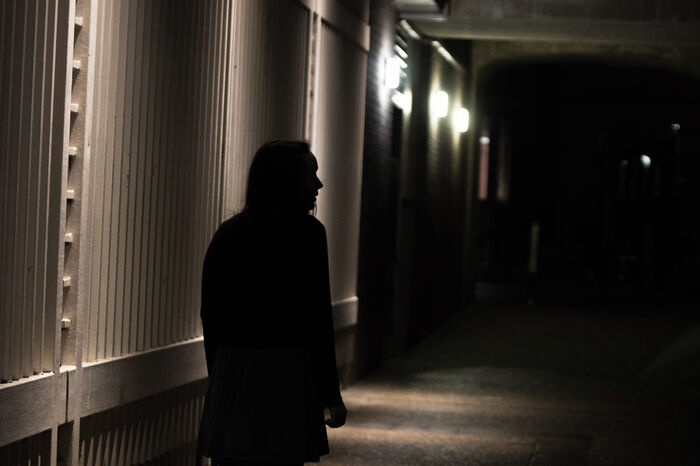Cambridge's Disciplinary Procedure
Analysis: The University’s harassment and sexual misconduct procedure is a good start, but it must go further
Aoife Hogan offers her take on Cambridge’s harassment and sexual misconduct policy

Students in Cambridge leave certain things to chance. You submit your essay a few hours after your deadline, hoping your supervisor hasn’t checked their pidge yet. Sure, you take a chance when you choose one college over another. But welfare should never be a gamble, or, as described by one survivor, “a college lottery”.
The University has certainly made significant strides towards treating allegations of harassment and sexual misconduct with the seriousness they deserve. Survivors have deemed the new procedure “comforting” and “promising”, but its effectiveness in practice remains to be seen. There is a danger that these well-meaning changes are all too shrouded in “ifs” and “mights”, and a lack of clarity in the explanation of the policy. On the University’s part, there has also been a lack of assertive actions to provide the same, decisive information to all students and staff.
The new set-up affords students a choice of which procedure best suits their needs, as, in the words of one survivor, “reporting harassment or sexual violence is difficult enough without being forced into a particular course of action.” The provision of a course of action less “serious” than immediately reporting to the police or directly to the Disciplinary Procedure is productive in a social environment where “victim-blaming is rife…a more mediation-based procedure may be helpful for some survivors.”
This element of choice is completely countered, however, by confusion in the University's public statements over whether the consent from of both parties is needed before an investigation can be undertaken. I fear that murkiness attests to the University’s hesitance to view all allegations as equally serious - an internalised expectation that students will “cry rape” - a view that something about the seriousness of an accusation changes when the accused is willing to face the claim. As one survivor put it, “if the perpetrator is innocent until proven guilty, then that makes the victim a liar until proven honest.” A perpetrator does not ask for a victim’s consent. The protection of one student’s welfare, by affording their traumatic claims the dignity of an investigation, should not be contingent on another student.
The introduction of a central reporting and investigative body seems, at face value, a valid attempt to rectify difference in treatment based on which college you attend. However, OSCCA still encourages students to use college procedure in cases of harassment. Also, because the University and college will not both investigate the same matter, if a student has already filed a complaint through college and has not reached an outcome that they are comfortable with, it logically follows that they cannot pursue further action through the University’s centralised procedure. This means that identical allegations could still receive different treatment at different colleges.
The lack of set guidelines for enforcement presents another issue. Survivors have pointed out to me that while this might make more people comfortable with coming forward, because they can regain even some sense of the control and autonomy that was forcibly stripped from them, it may deter those seeking certainty. The trauma of relaying one’s story, of justifying it and fitting it to boxes, is taxing enough without the possibility of having no real action taken. If the ramifications of harassment and sexual misconduct are not made entirely clear to students, how can we expect to see them taken seriously?
While initiatives such as the ‘Good Lad’ scheme are a step in the right direction to shaking and eliminating a culture of deeply ingrained misogyny, one survivor found the targeting of sport teams “accusatory” and “ill-placed”, as while they are often seen as hotbeds of sexism, this damaging culture extends far beyond rowing and rugby teams. While based upon an honourable premise, such initiatives can seem tokenistic for all involved, unless delivered sensitively and seriously. “It feels like it’s just ticking a box”, said one victim.
And it’s not the only box that may have been ticked nonchalantly. As a fresher this year, I attended my college’s consent workshop. Yes, we discussed consent, but I do not recall hearing anything concrete, in Freshers’ Week or thereafter, from my college or the University, about OSCCA – about what to actually do, not just if you need to discuss an issue, but if one needs to be actively dealt with.
The University claims that the procedure has been publicised. A spokesperson for OSSCA told Varsity that “The whole of collegiate Cambridge community (staff and students) were notified about the establishment of OSCCA initially through The Reporter, and then through the launch of an external website, and through liaison with College Senior Tutors.”
But while the Reporter, the University’s official internal journal, can be accessed online, it is not actively circulated to, nor widely read or even recognised among, the student body. This effectively places responsibility of awareness with the student, as does leaving the responsibility of informing students in the hands of the 31 autonomous colleges. If potential victims, and above all, potential perpetrators are not made aware of the system, what is it, beyond a token of action – a box ticked?
It should be asked why this treatment of this issue remains behind closed doors. These are doors we can’t hide behind, or be hidden behind, forever. It is a problem which ricochets and bleeds into other problems, like the current flaws in the intermissions system. The University should be commended for taking a serious step to work sensitively and collaboratively to face this troublingly prominent issue on University campuses. But students, staff and the University alike ought to probe the new policy, and fill in its gaps, so every student can rest assured that a transparent and decisive process stands if they are ever victimised, or risk victimising another.
 Comment / Plastic pubs: the problem with Cambridge alehouses 5 January 2026
Comment / Plastic pubs: the problem with Cambridge alehouses 5 January 2026 News / Cambridge academics stand out in King’s 2026 Honours List2 January 2026
News / Cambridge academics stand out in King’s 2026 Honours List2 January 2026 News / Cambridge businesses concerned infrastructure delays will hurt growth5 January 2026
News / Cambridge businesses concerned infrastructure delays will hurt growth5 January 2026 News / AstraZeneca sues for £32 million over faulty construction at Cambridge Campus31 December 2025
News / AstraZeneca sues for £32 million over faulty construction at Cambridge Campus31 December 2025 Interviews / You don’t need to peak at Cambridge, says Robin Harding31 December 2025
Interviews / You don’t need to peak at Cambridge, says Robin Harding31 December 2025










